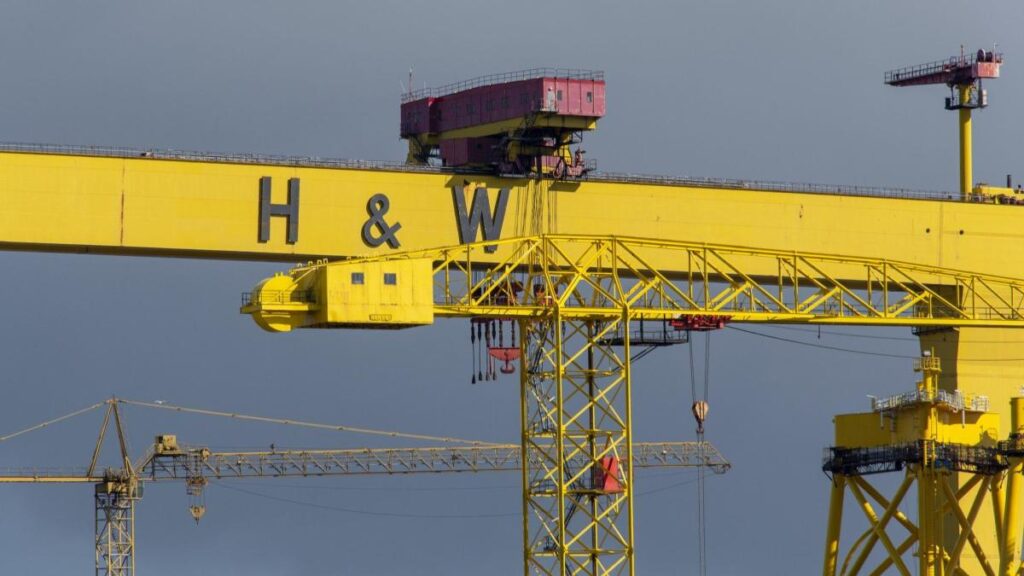Spain’s state-owned shipbuilder, Navantia, is poised to announce its acquisition of the iconic Harland and Wolff shipyard, famously known for constructing the Titanic. This development is set to be confirmed in a parliamentary announcement on Thursday, generated from exclusive negotiations that have been ongoing since October when Harland and Wolff’s parent company declared insolvency. A key aspect of this acquisition is the expectation that it will preserve all jobs at Harland and Wolff, which has a significant workforce across its facilities in Belfast, Appledore in England, and Methil and Arnish in Scotland. The deal’s potential enhancement is also being considered to accommodate rising costs, positioning it as an early success of the UK government’s post-Brexit economic strategies.
Navantia, which has its primary shipyard located in Cadiz, Spain, employs over 4,000 workers and boasts an annual turnover of approximately €1.3 billion (£835 million). The acquisition of Harland and Wolff aligns with Navantia’s previous engagements with the Belfast shipyard; they underlined this relationship via a project to construct three support ships for the Royal Navy, firmly establishing Harland and Wolff as a subcontractor in a significant defense sector initiative. The strategic buyout not only secures jobs but positions Navantia to capitalize on the historic reputation of Harland and Wolff within the maritime industry, potentially revitalizing the shipyard in a modern context.
Historically, Harland and Wolff has been an essential part of global shipbuilding since its establishment in 1861 by Edward Harland and Gustav Wolff. By the early 20th century, the shipyard had achieved dominance in the market as the foremost constructor of ocean liners globally. However, following World War II, its trajectory shifted drastically, plagued by financial crises and operational setbacks that led to temporary nationalization between 1977 and 1989. The retreat of support from its then Norwegian owners in 2019 resulted in insolvency, highlighting the shipyard’s decline, as it had not constructed any vessels for decades.
In its most recent attempts to revive, Harland and Wolff was acquired by Infrastrata, a small energy firm with limited maritime engineering experience. The company took on the name Harland and Wolff amidst burgeoning hopes of revitalizing operations. Though it secured a prominent contract with the Royal Navy through a consortium led by Navantia in 2022, it became increasingly burdened by financial losses and a heavy reliance on high-interest loans from US lenders for operational financing. Attempts to stabilize its finances, including a £200 million government loan guarantee, were thwarted, culminating in its holding company’s entry into administration in September.
The administrative control has seen the appointment of restructuring expert Russell Downs to steer the company toward new ownership. As the acquisition by Navantia approaches completion, it is being framed as a symbol of economic resiliency and a strategic pivot in post-Brexit relations between the UK and EU, especially in defense collaboration. The involvement of government ministers and discussions around joining the European Defence Fund underscore broader themes of security and economic partnership, likely to be highlighted at the imminent summit of UK and EU officials early next year.
Overall, the confirmation of Navantia’s acquisition of Harland and Wolff could mark a turning point not only for the historic shipyard but also for the maritime industry within the UK and EU sphere. It represents a merger of tradition with modern operational capacity, with the potential to reinvigorate one of the world’s most storied shipyards while simultaneously forging stronger ties in defense and economic collaboration between Spain and the United Kingdom. The unfolding narrative surrounding this deal will be closely observed as the shipbuilding sector continues to adapt and evolve in today’s challenging economic landscape.

